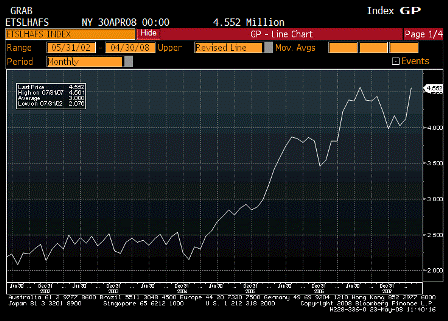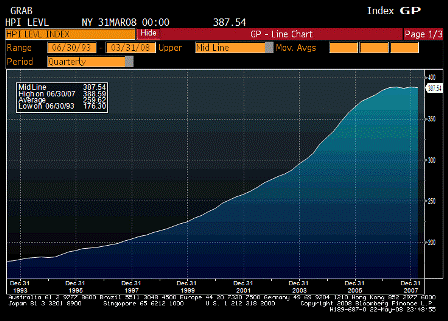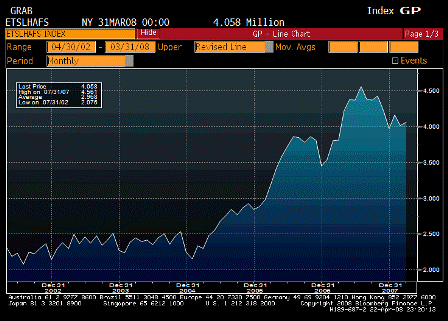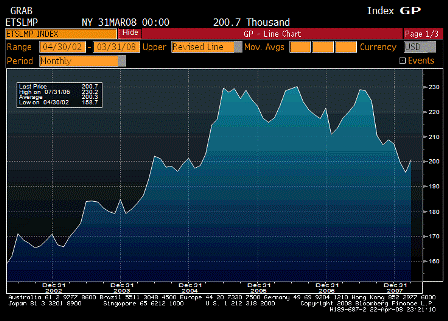(An email exchange)
On Wed, Jun 4, 2008 at 12:57 AM, Eric wrote:
>    I guess you have seen this article.
>
>     Primes going down too.
>
>
>     More generally look at the attached graphs, they suggest that IOs and other
>     exotic mortgage are clearly a major cause of the problems, independently of
>     the quality of the loans. I think there is here a pretty good argument to make
>     that non-fixed mortgages, and more especially exotic mortgage have structural
>     characteristics that make them prone to speculative and ponzi structure. The
>     borrowers expect to be able to refinance at one point once interest rate reset or
>     the principal become due. Warren you were saying that proof of ability to pay
>    “libor plus 3 or whatever” was necessary to qualify. This margin of safety
>     (expected ability to pay libor +3 even though now borrower pay only teaser rate)
>     may have been destroyed in several ways.
>
>     – the interest rate may have reset at a higher rate than libor + 3, so that people
>     cannot afford the mortgage anymore.
>
>     – ARMs reinforce the probability of the previous effect, especially when libor when
>     up sky high after the crisis
>
>    – Income of borrowers felt short of expectations, expecially with the economic
>    slowdown (here fiscal policy is clearly a big player)
>
>    – The margin of safety thinned. Maybe previously they had to prove libor + 5 but
>    progressively borrower only had to prove libor + 4 then libor + 3. This would qualify
>     more borrowers and make the deal more sensitive to shock in product and financial
>     markets
>
>     In all this case the affordability of the mortgage is questioned Þ need to refinance Þ
>     if not available then sell the house (short sale or foreclosure). Fixed-rate mortgage
>     eliminate three of the previous reason (only income expectations is a problem).
>
>     Éric
agreed with all.
add to that food and energy prices taking income from home mtg payments, which could be the larger short term effect.
the fed has been taking some heat for this under the theory that the low rates have hurt the $ and thereby hurt the financial sector via the above channel, rather than helped the financial sector via lower rates ‘easing’ conditions via the lower payments channel.
the fed has argued this isn’t the case, insisting the lower rates have helped more than hurt.
also, the fiscal package could soften some of the delinquency increases for a few months.
[top]





